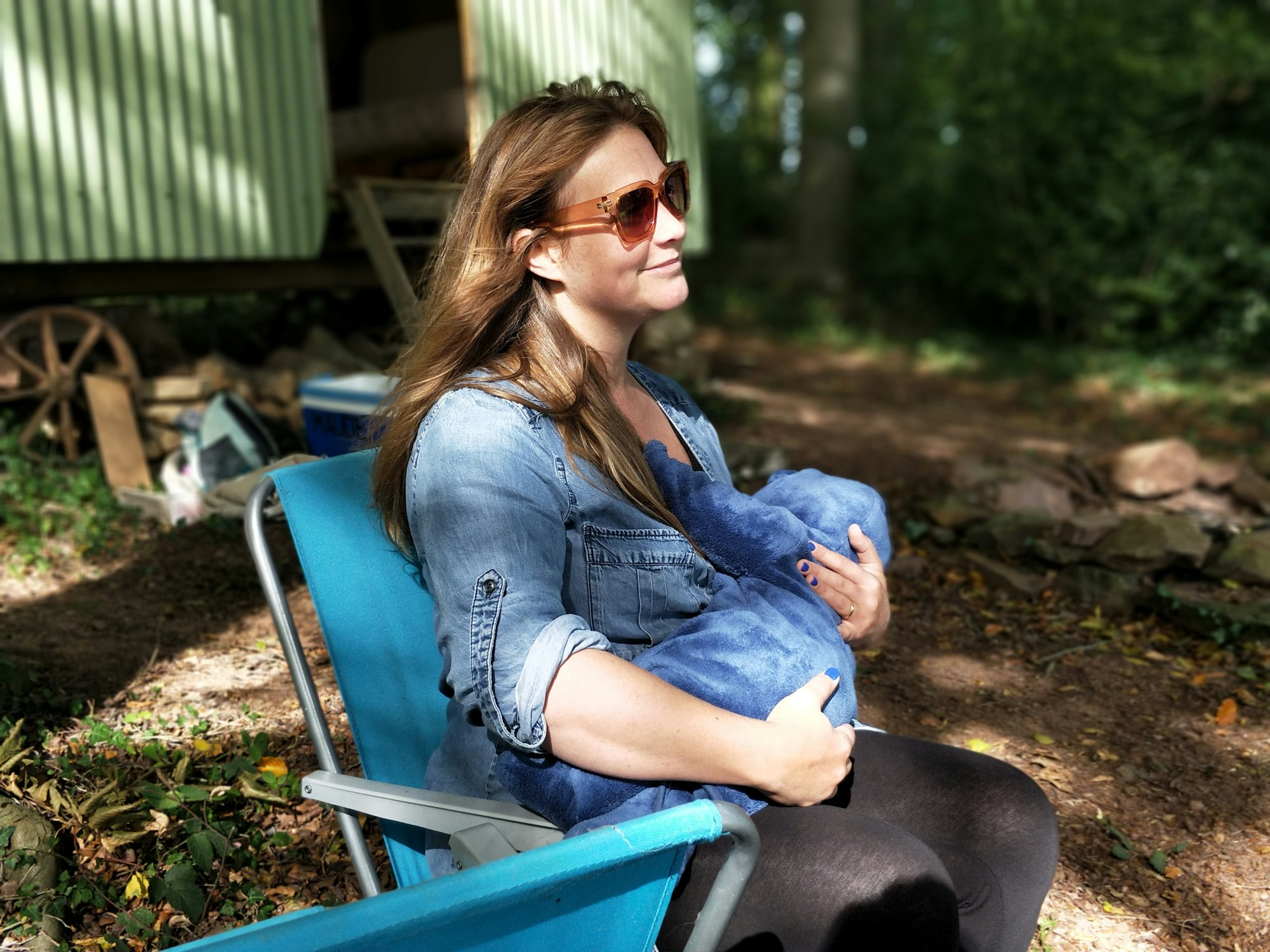There’s something deeply instinctual about a baby snuggling in to nurse, not out of hunger, but for pure comfort. It might happen after a tumble, during teething, or just before sleep. This is called comfort nursing, and while some might brush it off as unnecessary or even indulgent, many mothers know the truth: comfort nursing is a quiet superpower.
What Is Comfort Nursing?
Comfort nursing, is when a baby breastfeeds not for nutrition but for soothing, bonding, or emotional regulation. The sucking is gentler, slower, and often rhythmic without the usual gulping of a hungry feed. Some experts call this “non-nutritive sucking” (NNS), and it’s a normal, healthy behavior that begins as early as the womb.
Comfort suckling is as vital to a baby as the nutrients they get from breast milk. For babies, the breast isn’t just a food source—it’s a safe place. A familiar smell, warmth, heartbeat, and rhythm all rolled into one. It’s no wonder they reach for it in moments of overwhelm.
The Science Behind the Soothe
This isn’t just parental intuition. Studies show comfort nursing can:
Key Benefits
- Lower stress hormones (like cortisol) in both baby and mom
- Support better sleep cycles
- Help babies recover from pain or distress
- Stimulate oxytocin release (the “love hormone”)
- Improve jaw and mouth development
Comfort nursing is proven to lower an infant’s heart rate, support muscle tone, improve speech clarity later in life, and strengthen bonding. Breastfeeding also helps shape the baby’s mouth and jaw properly, unlike pacifiers and bottles that can lead to orthodontic issues down the road.
Research shows that babies whose emotional and physical needs are met early in life—like through comfort nursing and touch—grow up to be more independent, not less. They’ve learned to trust.
The Myth of the Human Pacifier
This is a comment many moms hear, and it can be frustrating. But here’s a thought: what’s wrong with being a human pacifier if it’s exactly what your child needs?
Pacifiers are a recent invention, modeled after breasts. For thousands of years, mothers comforted and fed their babies at the breast. What’s natural has become misunderstood. Unlike pacifiers, breasts offer skin-to-skin contact, immune support, warmth, and emotional security. You’re not just a pacifier. You’re their anchor.
Benefits Beyond the Baby
Comfort nursing is a two-way street. For moms, it can:
- Promote bonding and emotional connection
- Ease postpartum stress and anxiety
- Help maintain milk supply
- Provide a sense of calm and fulfillment
Breastfeeding triggers the release of oxytocin and prolactin—hormones that help with let-down, relaxation, and emotional balance. It’s your biology working for you.

Does Comfort Nursing Increase Milk Supply?
Comfort nursing can even help increase supply, especially in the early weeks. The more often the baby is at the breast, the more stimulation your body receives to keep producing. That said, it’s the effective removal of milk that matters most. If you’re worried about supply, check latch and feeding frequency, or talk to a lactation consultant.
When Comfort Nursing Feels Too Much
Sometimes comfort nursing feels like nonstop nursing. If you’re feeling overwhelmed, that’s valid.
Strategies for When You Feel Overwhelmed
- Carry your baby in a sling for closeness without always nursing
- Recognize flutter sucking or when your baby is asleep at the breast
- Gently unlatch when your baby is no longer actively feeding
- Offer cuddles or rocking
- When your baby starts to doze off at the breast before finishing a feed, gently switching them to the other breast can re-engage their sucking reflex and encourage more active feeding. This is known as switch nursing, and it can be especially helpful during growth spurts or if your baby tends to fall asleep quickly while nursing.
- Breast compressions are another effective technique. As your baby slows down or begins flutter sucking, use your hand to gently compress your breast in a rhythmic motion. This helps push more milk toward the nipple, stimulating a let-down and encouraging your baby to keep sucking and swallowing. It’s a great way to maximize milk intake without waking or upsetting your baby.
- You can also tickle their feet or use a cool cloth to wake them gently. This ensures they’re feeding rather than just dozing.
Nothing comforts a baby like the feel of their mother’s skin, the sound of her heartbeat, the warmth of her body. These things are naturally built into breastfeeding. It’s no coincidence babies fall asleep at the breast—it’s the safest place they know.
Extended Comfort Nursing
Comfort nursing doesn’t have an expiration date. Toddlers often return to the breast during growth spurts, changes at home, or before sleep. Breastfeeding can provide a reset button, calming big feelings when language is still developing.
And no, it won’t spoil them. If anything, it makes them feel more secure.
Trust Your Superpower
In a world full of parenting advice, noise, and pressure, trust this: if your child turns to you for comfort, and you have the capacity to give it, that is strength. That is a superpower.
You’re not just nourishing your baby’s body. You’re nurturing their nervous system, their emotional world, and your bond. Comfort nursing is one of the most natural, instinctual, and biologically attuned things you can do.
You don’t have to do it forever. You don’t have to do it perfectly. But if you do it at all, know this: you’re doing something powerful.

References
- A blog from Lactation Lab distinguishes comfort nursing from active feeding: slower suck, fewer swallows (“flutter sucking”), and primary goal is comfort rather than full milk transfer. Lactation Lab
- For example, an article in Today’s Parent notes a 2009 study where breastfeeding was more effective than a pacifier or other interventions for reducing newborn pain. Today’s Parent
- A comprehensive nutrition study (2025) found that breastfeeding contributes to emotional well‑being of mothers, in part through the release of oxytocin during skin to skin and feeding. MDPI
- A blog on flutter sucking points out that while comfort nursing is fine, if baby is doing mostly flutter sucking (very light suck, few swallows) and not gaining weight, a lactation consultant should evaluate milk transfer. Breastfeeding Support
- Night‑time non‑nutritive sucking in infants aged 1 to 5 months (Pollard 1999) sciencedirect.com
- Non‑nutritive sucking relieves pain for preterm infants (Liaw et al. 2010) PubMed
- Effects of breast‑feeding duration, bottle‑feeding duration and non‑nutritive sucking habits on the occlusal characteristics of primary dentition (Chen et al. 2015) DNB


